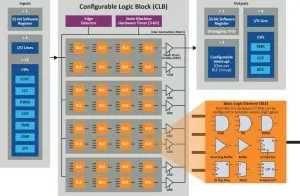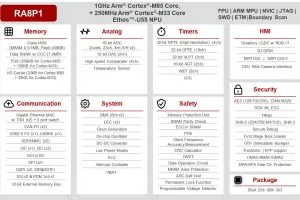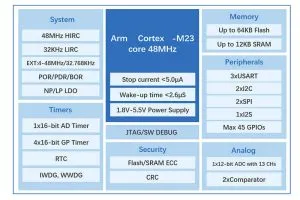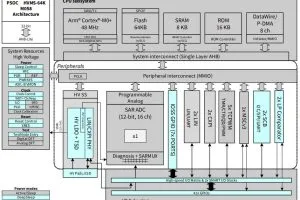
Each logic element can simulate AND, OR, NAND or NOR gate, a buffer or inverting buffer, a D or JK flip-flop, multiplexers or a four-input look-up table.
It is called the CLB (configurable logic block) and it based on an earlier simpler Microchip peripheral called the CLC (configurable logic cell).
“Building on over a decade of experience with the CLC, Microchip has evolved its customisable logic offering with the CLB to enable more complex hardware-based functions. The CLB performs custom hardware-based digital logic independently of the CPU, improving response time and power consumption. Users can configure the basic logic elements as matrix multipliers, look up tables, and flip-flops to achieve logic functions,” according to distributor Mouser which is stocking the first part MCU to have this block: the PIC16F13145 family which has from 8 to 20 pins.
The rest of the family have alterations in the last two numbers of the part number – nine parts cover all combinations of 8, 14 or 20 pins and memories of: 3.5kbyte flash with 256byte ram, 7kbyte flash with 512kbyte ram and 14kbyte flash with 1kbyte ram.
Among the other peripherals within the family are a 10bit ADC (with some in-built computation), an 8-bit DAC, two 50ns comparators, 8 and 16bit timers, and I2C/SPI communication. Some of these can operate independently of the CPU, allowing it to sleep to save power.
The 8bit core runs up to 32MHz and there is a 16 level hardware stack.
Operation is from 1.8 to 5.5V, and -40 to +85°C or +125°C.
 To support development, the PIC16F13145 Curiosity Nano (EV06M52A – left) is available, which has an integrated programmer-debugger.
To support development, the PIC16F13145 Curiosity Nano (EV06M52A – left) is available, which has an integrated programmer-debugger.
Configuration of the CLB is supported by Microchip’s Code Configurator, ad it is also now covered by the company’s MPLAB X integrated development environment.
Mouser has provided this PIC16F13145 product page link
A week later, Microchip introduced an MCU with a scheduler for turning analogue peripherals on and off
 Electronics Weekly
Electronics Weekly



